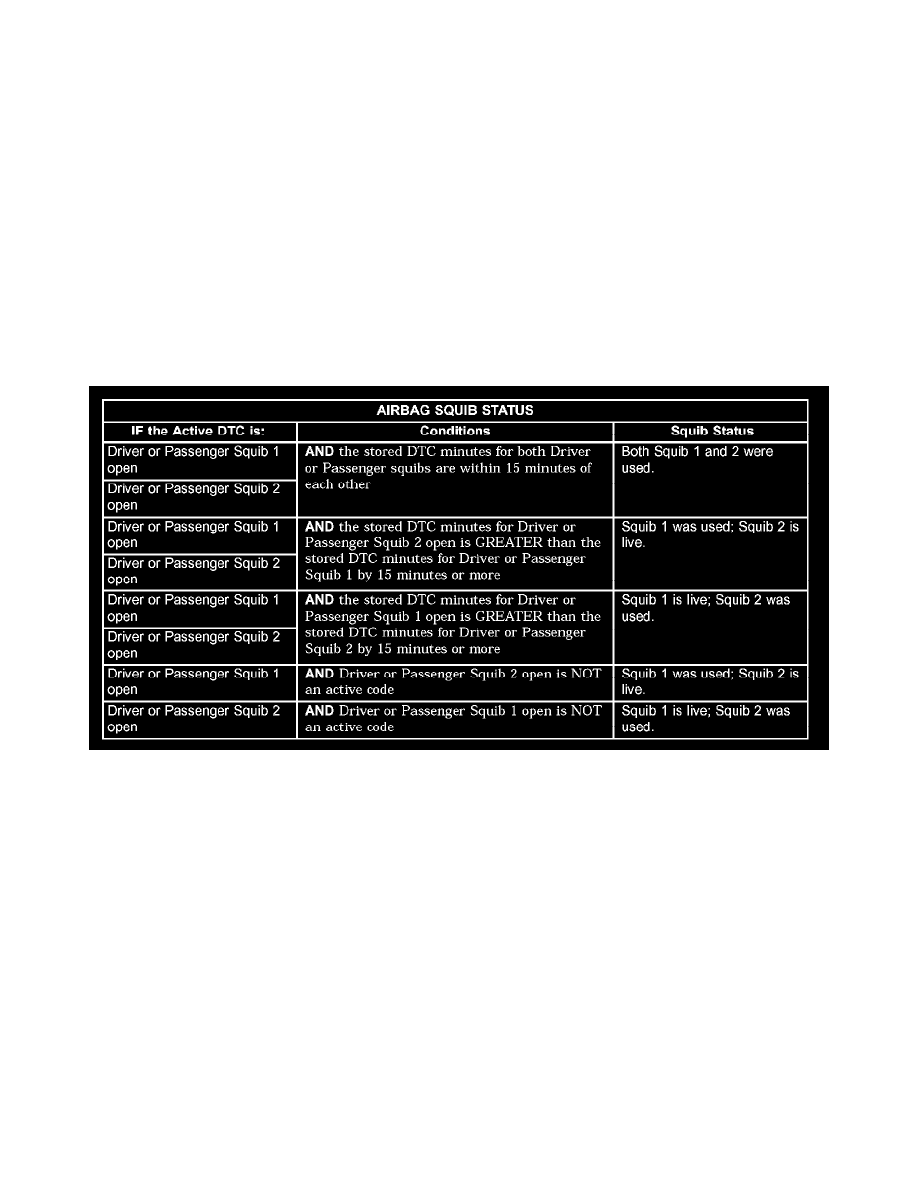Grand Cherokee 2WD V8-4.7L VIN J (2004)

Repairs and Inspections Required After a Collision: Service and Repair
Air Bag System
SERVICE AFTER A SUPPLEMENTAL RESTRAINT DEPLOYMENT
Any vehicle which is to be returned to use following a supplemental restraint deployment, must have the deployed restraints replaced. In addition, if
the driver airbag has been deployed, the clockspring must be replaced. If the passenger airbag is deployed, the instrument panel top pad must be
replaced. If a side curtain airbag has been deployed, the complete airbag unit, the headliner, as well as the upper A, B, C and D-pillar trim must be
replaced. These components are not intended for reuse and will be damaged or weakened as a result of a supplemental restraint deployment, which
may or may not be obvious during a visual inspection.
The passenger airbag mounting points on the instrument panel structural duct must be closely inspected for damage, and the instrument panel assembly
replaced if structural duct damage is evident. On vehicles with an optional sunroof, the sunroof drain tubes and hoses must be closely inspected
following a side curtain airbag deployment. It is also critical that the mounting surfaces and/or mounting brackets for the Airbag Control Module
(ACM) and the front and side impact sensors be closely inspected and restored to their original conditions following any vehicle impact damage.
Because the ACM and each impact sensor are used by the supplemental restraint system to monitor or confirm the direction and severity of a vehicle
impact, improper orientation or insecure fastening of these components may cause airbags not to deploy when required, or to deploy when not
required.
All other vehicle components should be closely inspected following any supplemental restraint deployment, but are to be replaced only as required by
the extent of the visible damage incurred.
AIRBAG SQUIB STATUS
Multistage airbags with multiple initiators (squibs) must be checked to determine that all squibs were used during the deployment event. The driver
and passenger airbags in this model are deployed by electrical signals generated by the Airbag Control Module (ACM) through the driver or passenger
squib 1 and squib 2 circuits to the two initiators in the air- bag inflators. Typically, both initiators are used and all potentially hazardous chemicals are
burned during an airbag deployment event. However, it is possible for only one initiator to be used due to an airbag system fault; therefore, it is always
necessary to confirm that both initiators have been used in order to avoid the improper handling or disposal of potentially live pyrotechnic or
hazardous materials. The following procedure should be performed using a DRBIII scan tool to verify the status of both airbag squibs before either
deployed airbag is removed from the vehicle for disposal.
CAUTION: Deployed front airbags having two initiators (squibs) in the airbag inflator may or may not have live pyrotechnic material within the
inflator. Do not dispose of these airbags unless you are sure of complete deployment. Refer to the Hazardous Substance Control System for proper
disposal procedures. Dispose of all non-deployed and deployed airbags in a manner consistent with state, provincial, local, and federal regulations.
1. Be certain that the DRBIII scan tool contains the latest version of the proper DRBIII software. Connect the DRBIII to the 16-way Data Link
Connector (DLC). The DLC is located on the driver side lower edge of the instrument panel, outboard of the steering column.
2. Turn the ignition switch to the On position.
3. Using the DRBIII, read and record the active (current) Diagnostic Trouble Code (DTC) data.
Using the active DTC information, refer to the Airbag Squib Status table to determine the status of both driver and/or passenger airbag squibs.
If none of the Driver or Passenger Squib 1 or 2 open are active codes, the status of the airbag squibs is unknown. In this case the airbag should be
handled and disposed of as if the squibs were both live.
